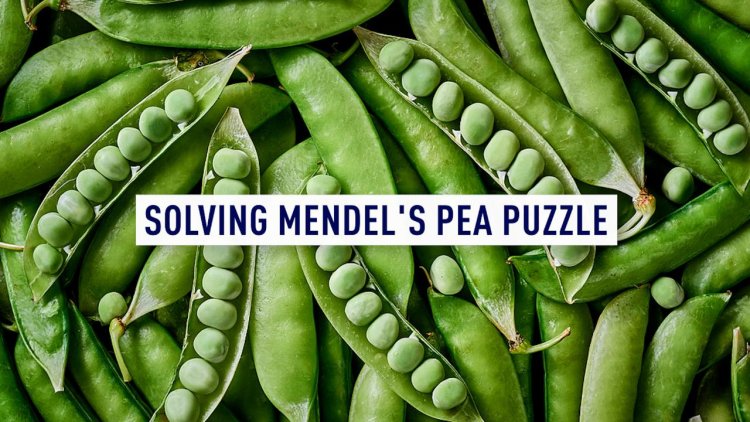UK-China partnership unlocks the secret of Mendel's renowned peas
Gregor Mendel laid the groundwork for modern genetics through a series of groundbreaking experiments with pea plants that revolutionized science.

In an impressive display of international scientific collaboration, researchers from China and the UK have successfully unveiled the genetic mysteries behind three of Mendel's intriguing pea traits. Led by Professor Cheng Shifeng from the Agricultural Genomics Institute in Shenzhen and scientists at the John Innes Centre in the UK, this team has determined the precise genetic mechanisms responsible for pod color, pod shape, and flower position—traits that have remained unresolved since Mendel's work in the 19th century.
After examining over 700 varieties of pea plants, the researchers discovered that the yellow coloration of pea pods arises from a significant genomic deletion that affects chlorophyll production rather than a simple gene mutation, as was previously thought. Instead of a single defective gene causing the yellow hue, an absence of a specific DNA segment hampers the plant's ability to complete the final stage of chlorophyll synthesis, the process responsible for the green color in plants.
Furthermore, the researchers found that pod shape is determined by two interrelated developmental genes that collaborate like co-designers to shape the pod's structure. Additionally, a gene that encodes a co-receptor-like kinase dictates flower position, acting as a signaling guide for where flowers should bloom.
The team has also recognized genetic markers associated with 72 agronomic traits, creating a significant resource for crop breeders. These findings will facilitate the implementation of AI-powered breeding techniques to enhance pea varieties, increase resilience, boost yields, and ultimately transform sustainable agriculture.
Professor Cheng Shifeng emphasized that the project's success stemmed from the inclusion of a diverse international seed collection that encompassed all of Mendel's traits as well as rare mutations. By conducting plantings in both northern and southern China, the researchers accumulated extensive data over two growing seasons, bolstered by historical UK records.
Dr. Noam Chayut, who heads the Germplasm Resources Unit, along with Professor Noel Ellis, a senior scientist with extensive experience in pea genetics, spearheaded efforts to assemble a comprehensive and representative array of pea plant varieties at the John Innes Centre.
"The genomic layer of information that we added brought so much information to this collection. We can make a huge leap forward in terms of how we can apply it for food security in Europe, in China and around the world," stated Dr. Noam Chayut.
As global food security faces mounting challenges from climate change, environmental degradation, and population growth, the capacity to breed crops that are more adaptable, nutritious, and productive is increasingly vital. This breakthrough not only resolves a long-standing scientific enigma but also paves the way for innovations in precision agriculture, offering powerful resources for crop advancement in an ever-evolving landscape.
"There's still a huge amount of data that we can still analyze, and this collaboration has a great deal of potential yet to be realized," remarked Professor Noel Ellis, who received this year's Mendel Memorial Medal.
Allen M Lee for TROIB News
Discover more Science and Technology news updates in TROIB Sci-Tech












